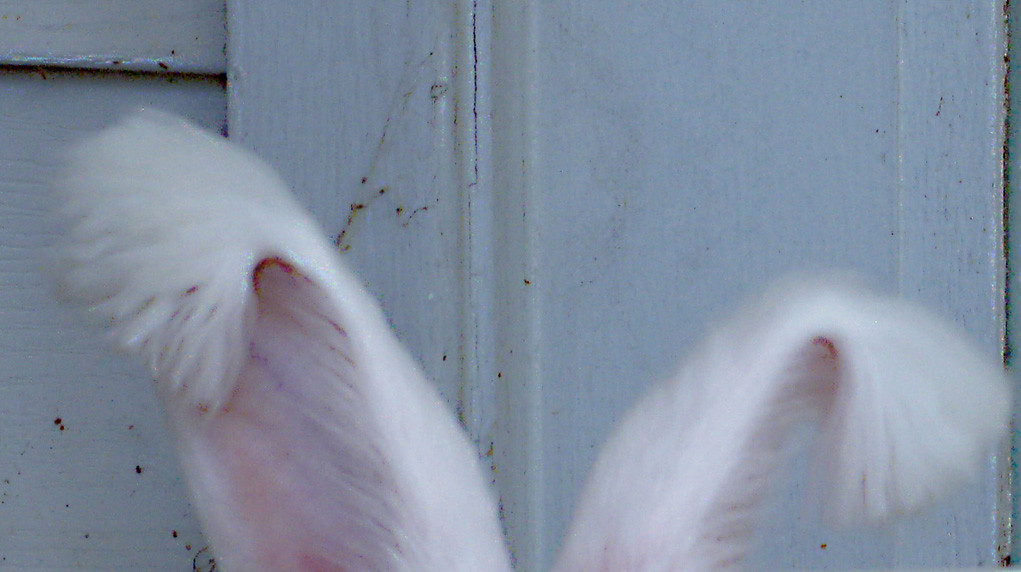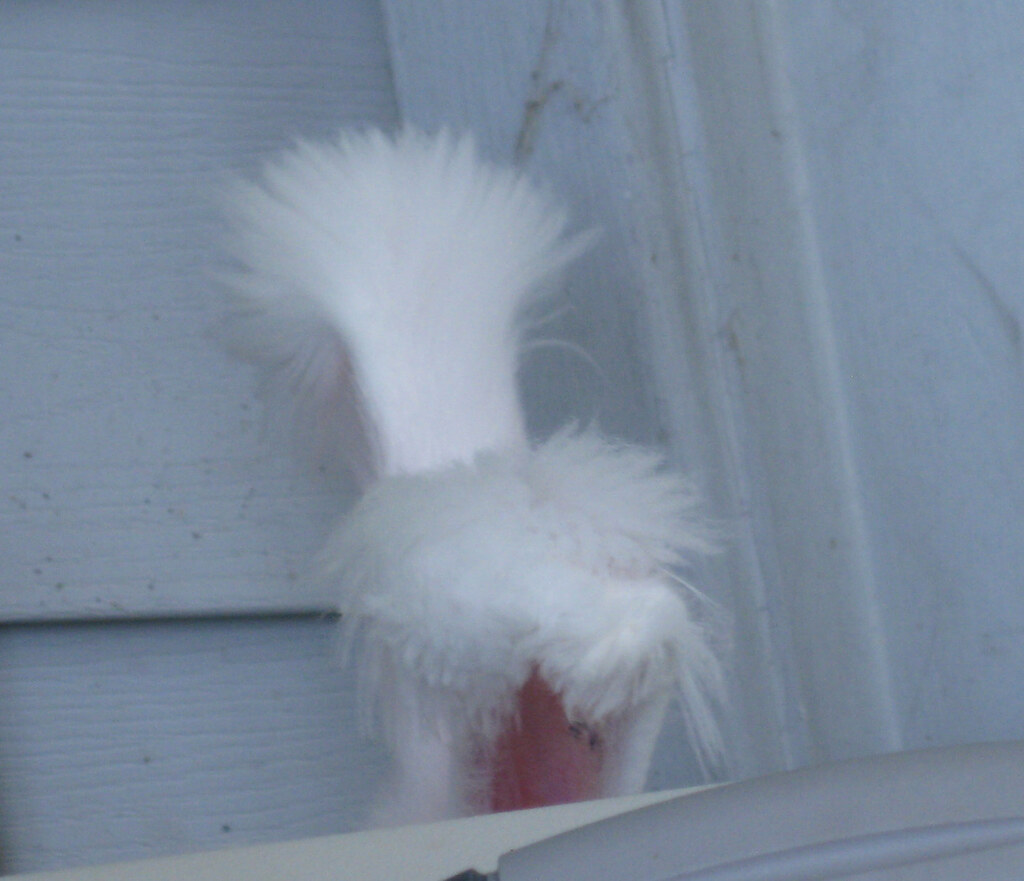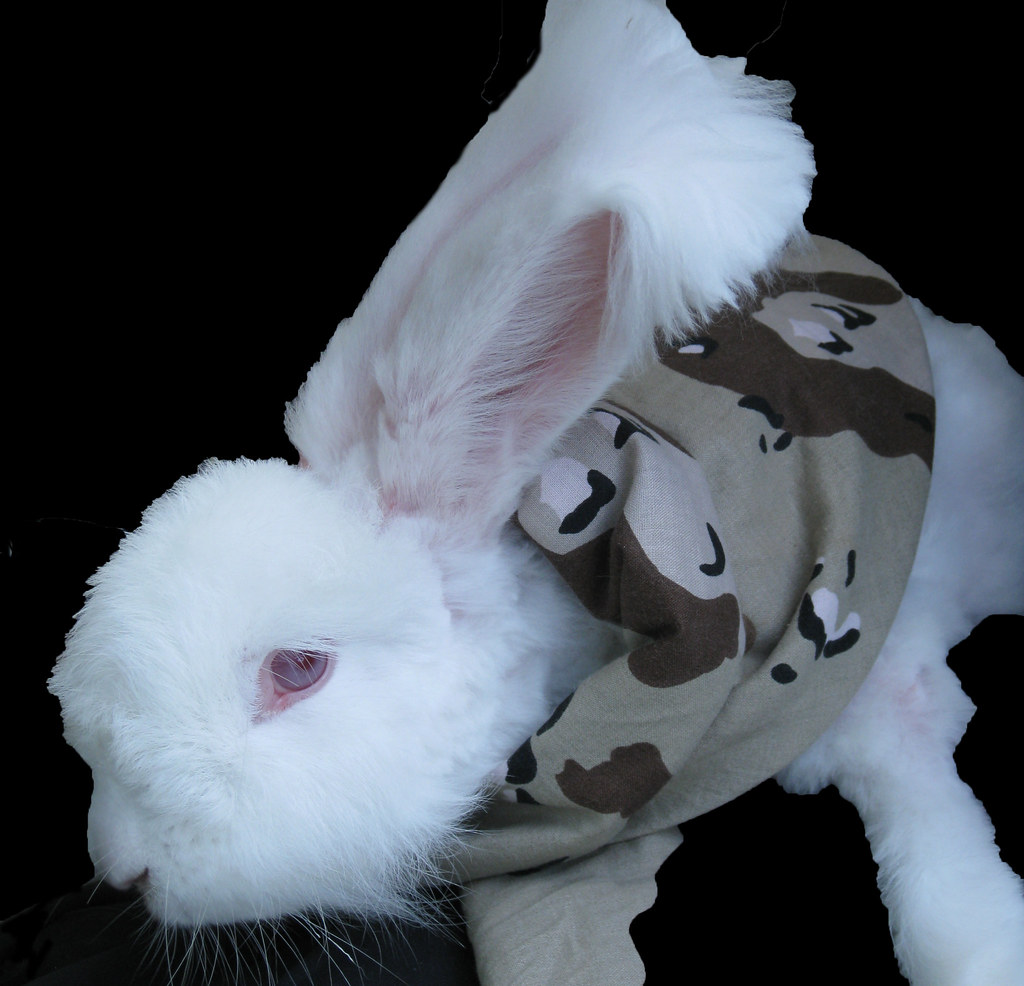Before we embarked on our bunny adventure that culminated in the addition of Rambo to our family, we first had to decide what kind of bunny we wanted. Well, clearly we wanted one with a great personality, but aside from that, I wanted prime angora fiber to spin. So we did some research and you guys get to read all about it. Or not. Harry fell asleep on the "H" key in t*e middle of t*e second paragrap*. I couldn't type muc* until *e woke up.
...................
There are four major rabbit wool breeds: Giant, French, English, and Satin. Germans are a subgroup of Giants, and always white. German rabbits don't shed, so they are shorn about four times a year. The other three types are usually plucked, but I gather that some people shave their bunnies in hot weather. Angora fiber is eight times warmer than wool and I suspect that most of them would faint (or worse) in the summer heat we've had this year.
Germans are always white with red eyes; the rest of the breeds come in a dazzling assortment of colors, many of which have lovely, evocative names--frosted pearl, lilac, silver fox, blue, and my favorite, copper agouti. In reality, there are only four colors--white, black, gray, and brown--with an infinite variety of shades, tones, and markings.
Because I wanted to dye the yarn, we started hunting for white rabbits. But before we actually bought one, I needed to do some fiber testing. I therefore ordered small samples of each breed from Etsy vendors--an inexpensive way to dabble in angora spinning.
Angora staple varies considerably, but should be about 1-3" long for pleasant spinning. The German fiber was neatly machine-carded into top. I don't own any carders, so for the other three samples I pulled handfuls of fiber apart several times until I had a semi-orderly mass.
The first bag I opened was the English fiber. And the first few handfuls were delightful to spin--something like yak, if you've ever handled that fiber. The handfuls were fluffy and soft, spinning into a fairly smooth, thin yarn on my electric spinner with occasional blips of short fiber.
To my dismay, however, the bottom half of the bag was full of matted globs and second cuts too short to spin comfortably. Clearly, the owner of this bunny was a meticulous caretaker, because she first clipped off all the long fiber and then went back over bun-bun a second time to make sure all the matted clumps and fuzzy bits were gone. Too bad she decided to pad her retail fiber with them. Half the bag went into the trash can.
I spun the nicely plucked French fiber on a spindle. French angora is noted for its guard hair, which is not the stiff, scratchy stuff found on some sheep, goats and camelids. It's poofier, soft and very fine. In fact, it's the guard hairs that bloom, making French angora yarn so cuddly (and shed-prone). Despite my best effort, I couldn't get a perfectly smooth yarn from it. It spun a bit thicker than the English, but produced a really lovely result, blips and all.
The incredible German roving spun like whipped cream--there's no other way to describe it. I dashed back to the Etsy vendor, only to discover that there was no more. It spun into a perfectly smooth yarn; grist didn't seem to matter. This stuff was happy to be spun very thin, very thick, or medium with no complaints.
Alas, the Satin fiber was really too short to spin comfortably. I put the bag away after an hour of painful micro-short-draw. If I ever get a carding machine, I might experiment with it.
I took some photos, but I ended up with an assortment of white/gray fluff and yarn photos with no distinguishing features and I didn't want to bore you with those.
Suffice it to say that my angora research was thorough and I pass on the following bits of wisdom to you:
- If you buy a bag of plucked or shorn fiber from an Etsy vendor you don't know, don't be surprised to find that some of the material is unspinnable.
- Prime angora can be easily spun on just about anything--spindles, e-spinners, charkhas, or your favorite foot-powered wheel.
- If you find any German angora roving, don't buy it. Send me the link immediately.
- Cover your lap with a piece of velvet or other adherent material to catch all the flyaway bits. Do not sneeze around loose angora.
- Undiluted angora yarn is not stretchy and is really, really warm. Such yarn would make an excellent scarf for anyone living in or near the Arctic/Antarctic Circles. Mixing angora with fine wool, such as merino, will produce a sproingier and more temperate result. Add more merino the further south you live. Those folks on the equator probably should skip angora altogether and stick with Vorpal Bunny leg fiber, which often resembles cotton, except for the black variety, whose fiber is indistinguishable from fwooper feathers.



